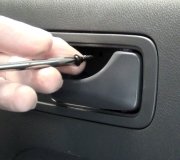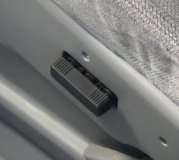The cruise control kicks out when you tap the brake pedal. There is a separate switch contact in the switch specifically for the cruise control. Voltage for that circuit comes from the brake light circuit and fuse. That is for safety and is designed in. In the event the fuse were to blow for the brake lights, you would never get the cancel signal from the brake pedal.
When the brake pedal is released, the contact for the brake lights is off and the contact for the cruise control is on. When the switch is out of adjustment, it is possible for the cruise control switch to turn off but it's not far enough out of adjustment for the brake lights to turn on.
On older cars, the single brake light switch sent voltage to turn on the brake lights AND to kick out the cruise control. Sometimes those switches developed pitted or arced contacts and the switch would not work. That meant the brake lights would not turn on but it also meant the cruise control would not kick out.
By using a separate switch contact in your car, if it became pitted, the cruise control will never turn on. That is safer than the alternative that it wouldn't kick out and they find you in the next county still sailing along!
Aftermarket add-on cruise controls also tap into the brake light fuse for their power. That causes them to not work too if the fuse is blown. Again, that is for safety because the cruise would not turn off when you tapped the pedal.
Thursday, April 21st, 2011 AT 6:04 AM


